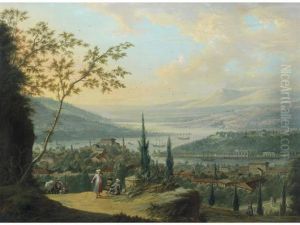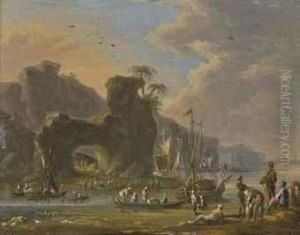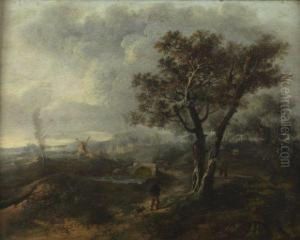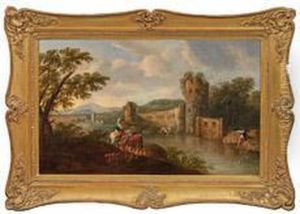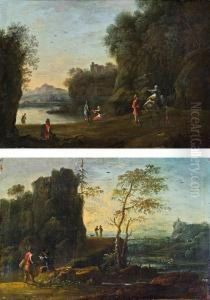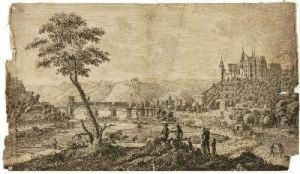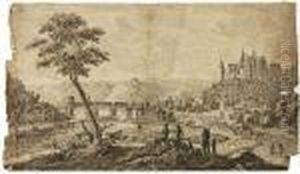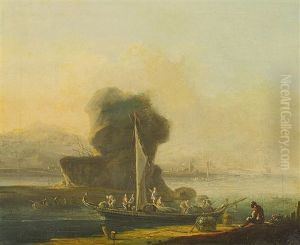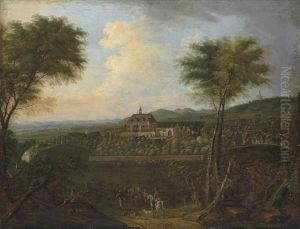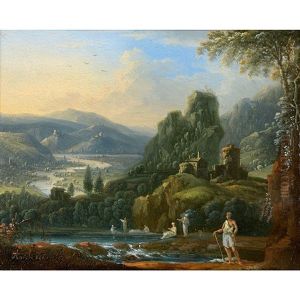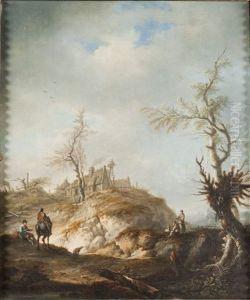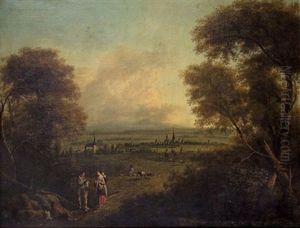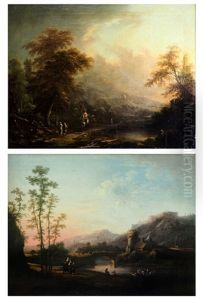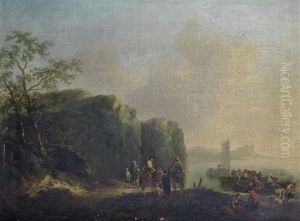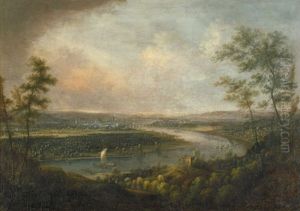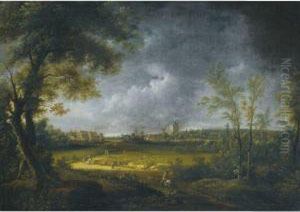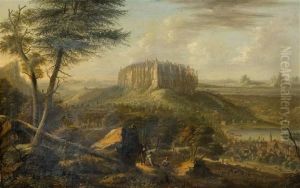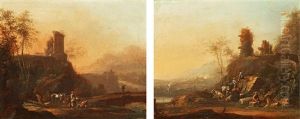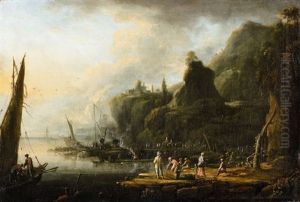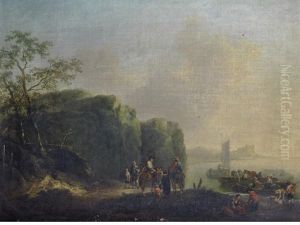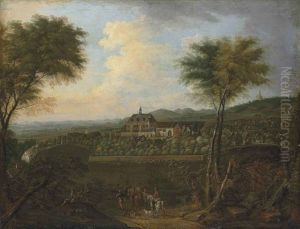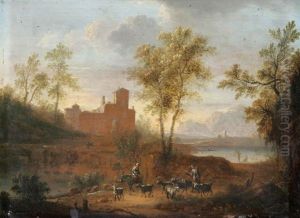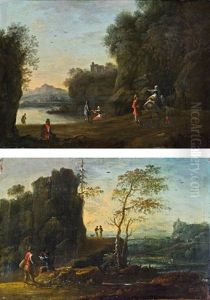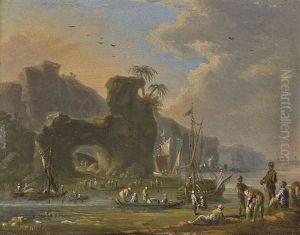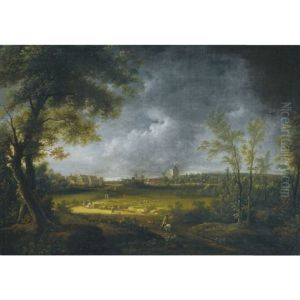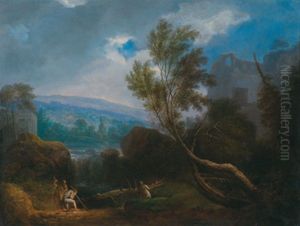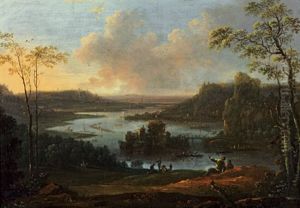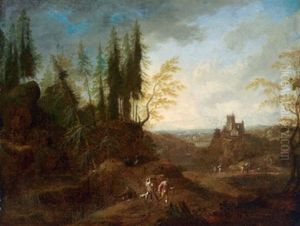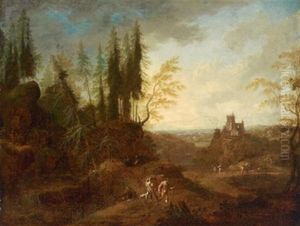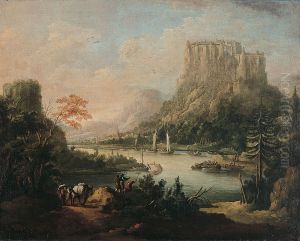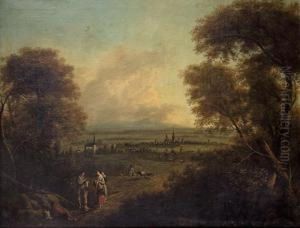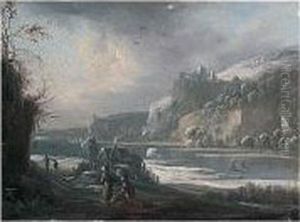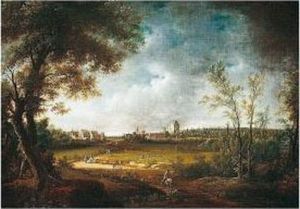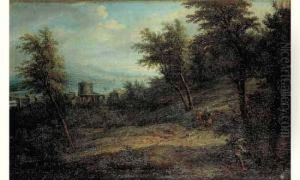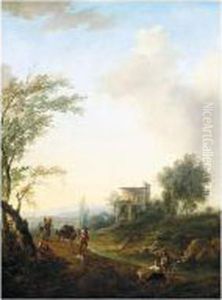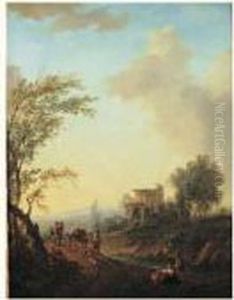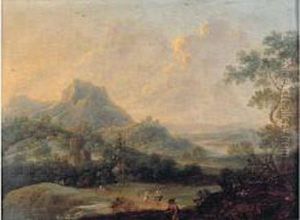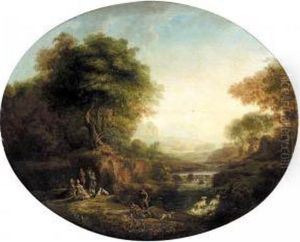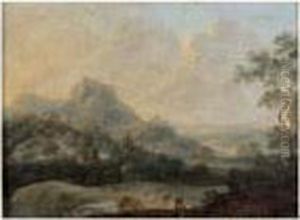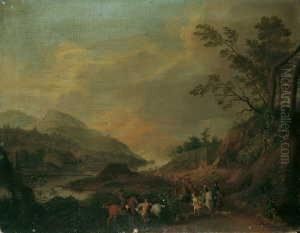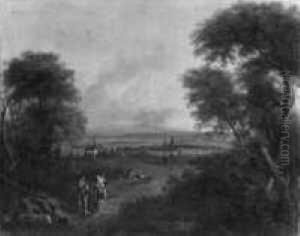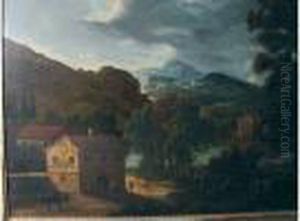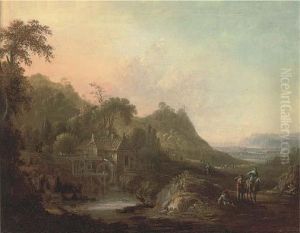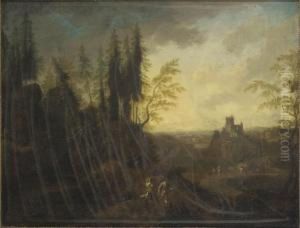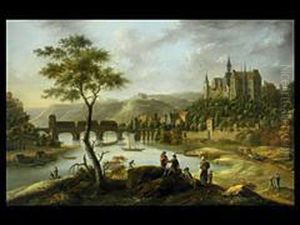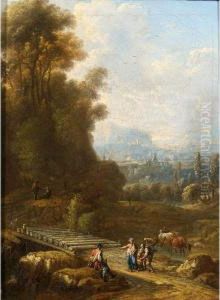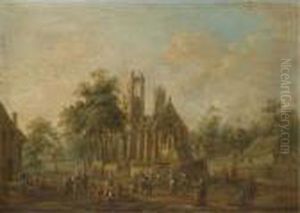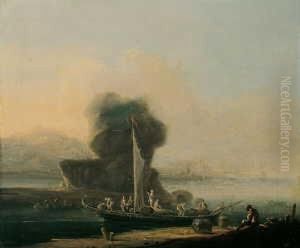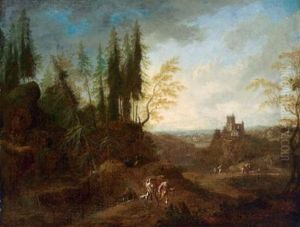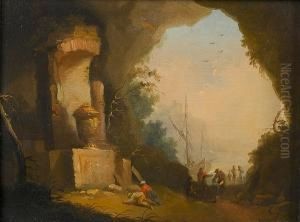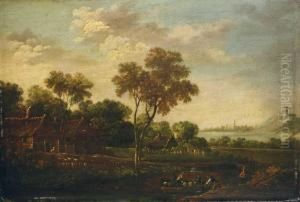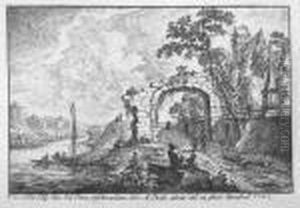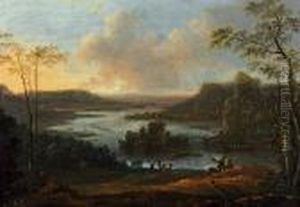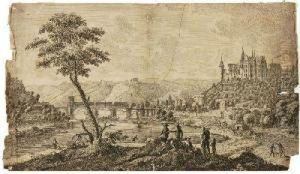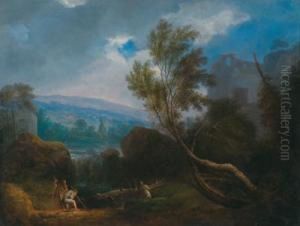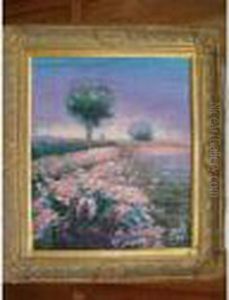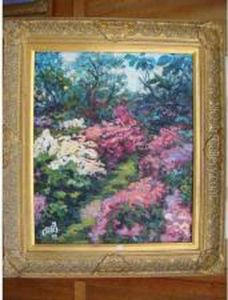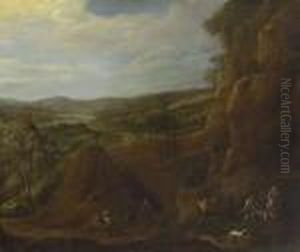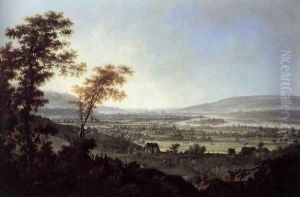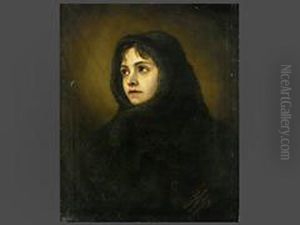Johann Alexander Thiele Paintings
Johann Alexander Thiele was a German painter and engraver, born on April 26, 1685, in Erfurt, Germany. Thiele initially trained under his father, who was a baker and painter, before moving to Dresden to continue his education in the arts. In Dresden, he became influenced by the works of the Italian baroque painters, as well as by the rich cultural environment of the city, which was a significant center for the arts during his time.
Thiele's work is characterized by his landscapes, which often featured rivers and ruins, displaying a distinct understanding of light and atmosphere. He was one of the early German artists to adopt the style of landscape painting that was becoming prominent in other parts of Europe, particularly in the Dutch and Italian traditions.
In 1712, Thiele was appointed court painter by Augustus II the Strong, Elector of Saxony and King of Poland, which significantly boosted his career. His position at the court allowed him to produce a number of significant works, including paintings for the royal palaces and for other members of the aristocracy. Thiele's landscapes were not only appreciated for their aesthetic qualities but also for the way they captured the essence of the Saxon countryside, thereby contributing to a growing sense of regional identity.
Apart from painting, Thiele was also a proficient engraver, and he created several engravings of his own paintings as well as works after other artists. His engravings helped to spread his fame beyond the borders of Saxony and contributed to his financial success.
Thiele's influence extended to his role as a teacher, and he instructed several students who would go on to become notable painters in their own right. His teaching emphasized the importance of studying nature directly, a practice that became a standard approach in landscape painting.
Johann Alexander Thiele died on May 22, 1752, in Dresden. His legacy is preserved in the collections of various museums, and he is recognized as a significant figure in the development of landscape painting in Germany during the 18th century.
